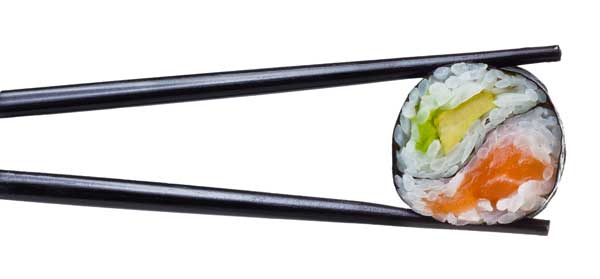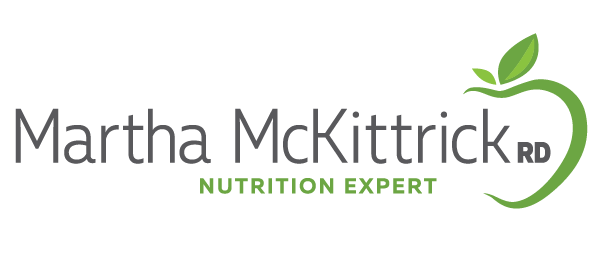PCOS and Fatty Liver

You know all too well about weight gain, hair growth, hair loss, acne and fertility issues that can come with PCOS. And you’re probably aware of the link between PCOS and diabetes. But there’s one condition you rarely hear about – fatty liver! It’s estimated that up to 55% PCOS patients have fatty liver disease (depending on the diagnostic criteria used). The good news is that there is a lot you can do to prevent getting it, or to reverse if you have it. Read on to learn more about PCOS and fatty liver.
Updated: 4.2023
What is fatty liver?
Your liver is the largest solid organ in the body that has more than 500 vital functions, including digestion, detoxification, storage of nutrients, and hundreds of other jobs. As you might have guessed from its name, fatty liver, also called hepatic steatosis, is a condition of an accumulation of fat in the liver. A fatty liver doesn’t function properly and can lead to more severe cases of liver disease. There are two types of fatty liver disease: nonalcoholic fatty liver disease (NAFLD) and alcoholic fatty liver disease. We’ll be referring to NAFLD in this post, as it’s the one that’s most common in PCOS (and it has nothing to do with alcohol consumption!).
Nonalcoholic fatty liver disease (NAFLD)
 According to the American Liver Foundation, NAFLD is the most common form of chronic liver disease in the United States; about 25% of the U.S. adults are estimated to have NAFLD. Two kinds of conditions fall under the NAFLD category: simple fatty liver and nonalcoholic steatohepatitis (NASH).
According to the American Liver Foundation, NAFLD is the most common form of chronic liver disease in the United States; about 25% of the U.S. adults are estimated to have NAFLD. Two kinds of conditions fall under the NAFLD category: simple fatty liver and nonalcoholic steatohepatitis (NASH).
- Simple Fatty Liver
This form of NAFLD doesn’t typically cause cell damage or complication in the liver despite having fat in the liver.
- Nonalcoholic Steatohepatitis (NASH)
NASH, a more severe form of NAFLD, occurs when you have inflammation, cell damage, and an increased buildup of fat in the liver, causing fibrosis or scarring. NASH can lead to more severe conditions, such as cirrhosis or liver cancer.
Risk factors for fatty liver
 Although the cause of the nonalcoholic fatty liver disease is unclear, the following are some of the risk factors:
Although the cause of the nonalcoholic fatty liver disease is unclear, the following are some of the risk factors:
-
- Overweight and obesity
- Type 2 diabetes
- Insulin resistance
- High blood pressure
- High cholesterol
- High levels of triglycerides in the blood
- Concentrated fat in the belly
- High consumption of sugar
- Impaired gut health
- PCOS
PCOS and fatty liver
PCOS patients have 4x the incidence of NAFLD compared to those without PCOS. In addition to insulin resistance and higher rates of obesity in PCOS, studies have suggested that androgen excess may also play a role. For that reason, screening for NAFLD is recommended in patients with PCOS.
How fatty liver is diagnosed
 It’s not easy to find out whether or not you have fatty liver disease because most people don’t have symptoms. Your doctor may consider your medical history, diet, and lifestyle and conduct one or more of the following examinations:
It’s not easy to find out whether or not you have fatty liver disease because most people don’t have symptoms. Your doctor may consider your medical history, diet, and lifestyle and conduct one or more of the following examinations:
- Physical exam: Your doctor weighs you and checks your body for signs of liver problems such as an enlarged liver or jaundice.
- Blood tests: These can show if you have high levels of liver enzymes such as alanine aminotransferase (ALT) and aspartate aminotransferase (AST). If so, there could be a problem with your liver.
- Imaging tests: You may get an ultrasound, computerized tomography (CT) scans, or magnetic resonance imaging (MRI). These tests can help show if there’s any fat in your liver. But they can’t tell whether you have simple fatty liver or NASH.
- Not everyone with NAFLD needs to have a liver biopsy.
Natural treatments for fatty liver disease
The good news that diet and lifestyle changes can improve and even reverse fatty liver disease.
Diet for fatty liver
 Consume a diet that isn’t excessive in fat.
Consume a diet that isn’t excessive in fat.- Limit intake of saturated fat (found mainly in animal fats) and consume more unsaturated fats found in olive oil, avocado, nuts, and seeds.
- Consume omega-3 fats, found in fatty fish, including salmon, mackerel, herring, and sardines, may promote liver fat loss.
- Increase intake of high fiber foods (goal = 25 grams/day) as well as antioxidant-rich foods. A well-balanced diet that includes whole foods such as fresh fruits, vegetables, grains, legumes, nuts, and seeds can provide enough fiber and antioxidants, which can decrease oxidative stress and improve NAFLD.
 Avoid high-fructose corn syrup, found in many soft drinks, as it promotes fatty acid and triglyceride synthesis in the liver and is associated with NAFLD.
Avoid high-fructose corn syrup, found in many soft drinks, as it promotes fatty acid and triglyceride synthesis in the liver and is associated with NAFLD.- Limit/avoid simple and “white” carbs and consume more whole grain carbs. Also, keep the total intake of carbs moderate (~ 50% of calories)
- Choose lean protein (about 20% of total calories).
- Avoid excess alcohol consumption (or better yet, avoid it totally)
Regular physical activity
Regular exercise is essential for overall health; however, it’s especially crucial if you have NAFLD. Studies in people with NAFLD show exercise (both aerobic and resistance) promote weight reduction, decrease in hepatic fat content, improvement in insulin sensitivity, and better liver fatty metabolism.
Recommendation:
- At least 150 minutes/week at a moderate-intensity aerobic activity or 75 minutes/week at a vigorous intensity.
- Cardiovascular (aerobic) exercise- 5 times a week,
- Resistance (strength) training- two or more times a week
- Reduce sedentary time and have a more active lifestyle.
Weight reduction
Losing weight is an effective way to treat most NAFLD cases, with a good chance to reverse the condition. Numerous studies (1, 2, 3) have suggested that weight loss promotes a decrease in liver fat content. Weight loss is also an effective way to improve insulin sensitivity, a major feature of NAFLD. A gradual weight loss by 7%-10% can improve conditions of NAFLD in adults with overweight or obesity. However, having a very low-calorie diet or losing weight too quickly can worsen NAFLD and cause inflammation in the liver.
Supplements for fatty liver
Some studies have shown that certain supplements may help reduce fat in the liver and maintain a healthy liver. However, more research is needed to confirm the effectiveness and safety of taking supplements in the treatment of NAFLD. 
- Berberine: a plant that has shown to reduce blood lipids and blood sugar and improve insulin resistance and liver function.
- Curcumin: an active ingredient in turmeric has been reported in several studies to improve NAFLD through a reduction in liver fat content, BMI, and cholesterol levels.
- Milk thistle: also known as silymarin, milk thistle is an herbal supplement. Some studies have shown that it may reduce inflammation in people with NAFLD.
It’s important to check with your doctor before taking any supplements as they could interact with your other medicines or cause side effects.
Bottom Line
 Fatty liver disease (NAFLD) is more prevalent in PCOS patients primarily due to the major underlying features of PCOS such as obesity, insulin resistance, and androgen excess. However, the bright side is that most early-stage fatty liver disease can be reversible with proper lifestyle intervention. Of course, it is not easy as it sounds to lose weight, make dietary modifications, and maintain regular exercise, but it is a crucial yet most effective first-line treatment for NAFLD. So, don’t be discouraged if you didn’t check off all the things mentioned above in your first try. The key is not giving up and keep trying until you succeed.
Fatty liver disease (NAFLD) is more prevalent in PCOS patients primarily due to the major underlying features of PCOS such as obesity, insulin resistance, and androgen excess. However, the bright side is that most early-stage fatty liver disease can be reversible with proper lifestyle intervention. Of course, it is not easy as it sounds to lose weight, make dietary modifications, and maintain regular exercise, but it is a crucial yet most effective first-line treatment for NAFLD. So, don’t be discouraged if you didn’t check off all the things mentioned above in your first try. The key is not giving up and keep trying until you succeed.
References:
Dietary/nutritional recommendations for NAFLD/NASH: 1, 2, 3.
Treatment of non‐alcoholic fatty liver disease
Fructose Consumption, Lipogenesis, and Non-Alcoholic Fatty Liver Disease

This blog post was written by Nikki Kim, a recent graduate from New York University with a B.S. in Nutrition and Dietetics.
She’s excited to gain more professional experience and develop her career in the dietetics field. Working under the pandemic situation, she finds it fascinating to utilize technology and multimedia graphics to deliver helpful information to the mass. Nikki likes to spend her downtime with her dog, Namu, and her guilty pleasure is binge-watching cooking videos on Youtube.
RELATED POSTS
MEET MARTHA
I especially love problem-solving, whether it’s helping women defeat issues plaguing them for years, helping a busy executive find practical ways to get heart healthy, or providing tips to help you reverse diabetes. That’s why I’m on a constant quest to expand my knowledge by staying on top of the latest research.

20 Ways To Eat Out 550 Calories or Less!
No time to cook? We’ve got you covered. Here are 20 healthy meals from a variety of cuisines that won’t pack on the pounds. Most of them also have less than 30 grams of carbs.
Subscribe to my newsletter and get this free download.




